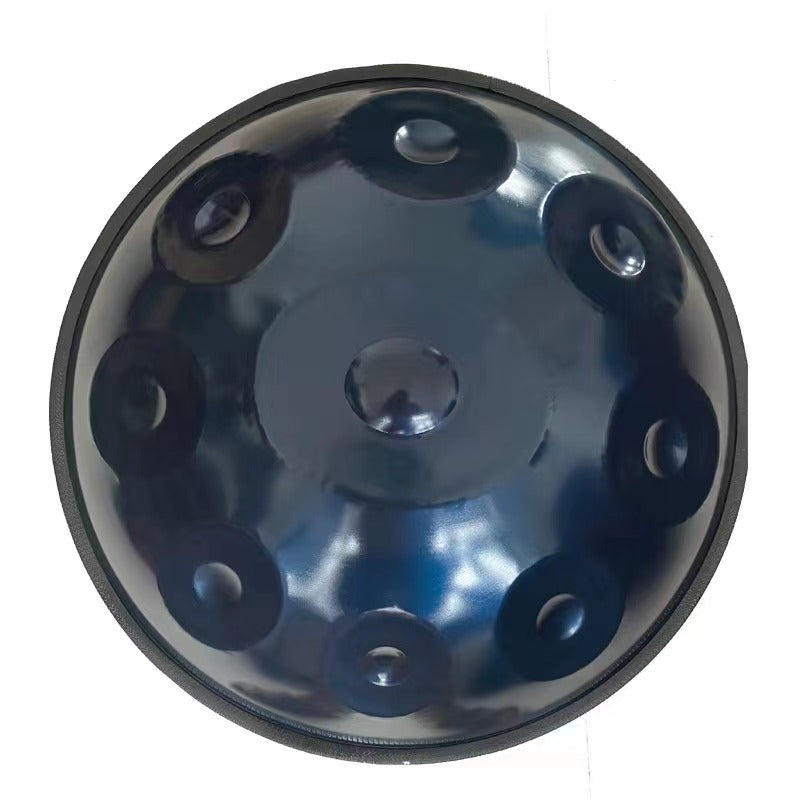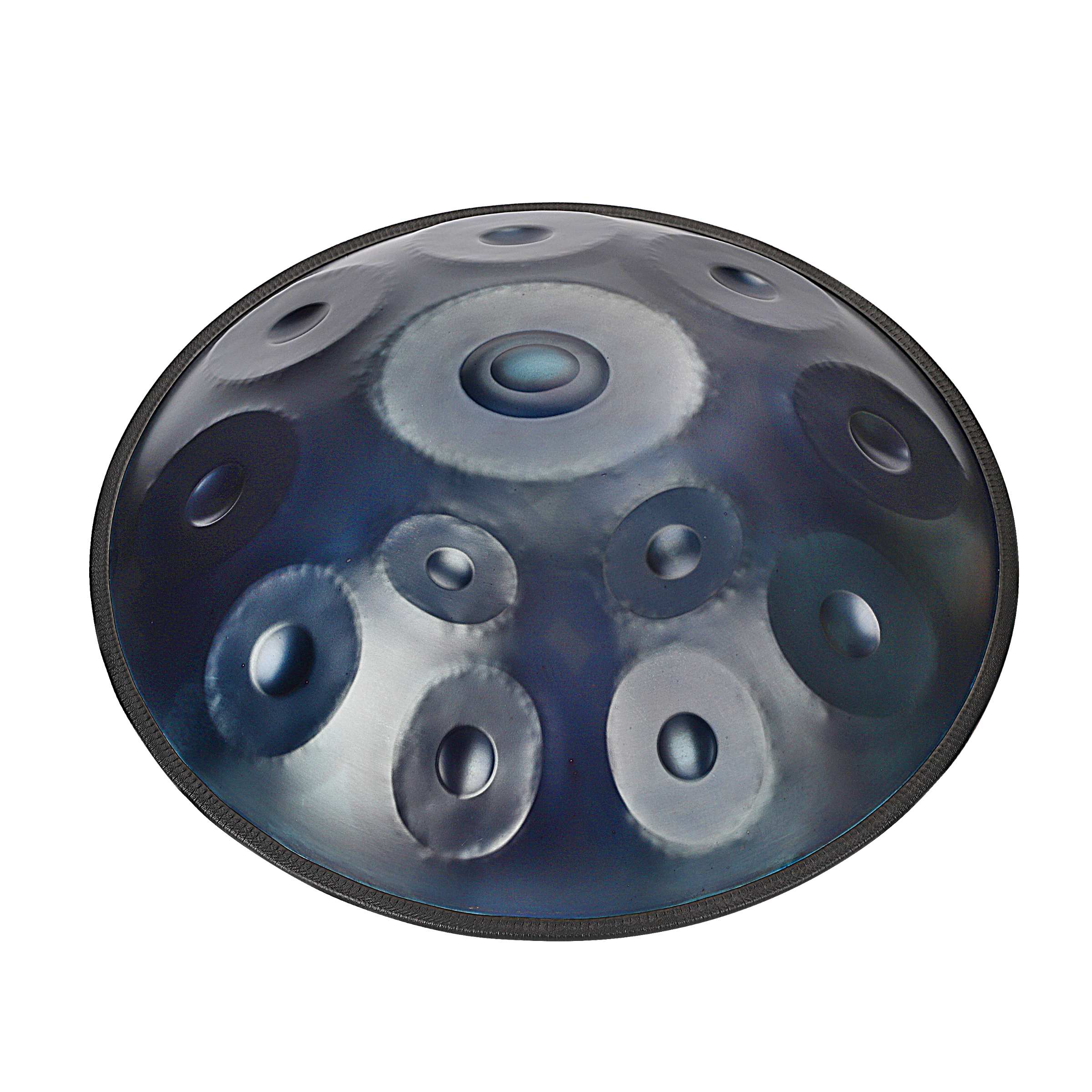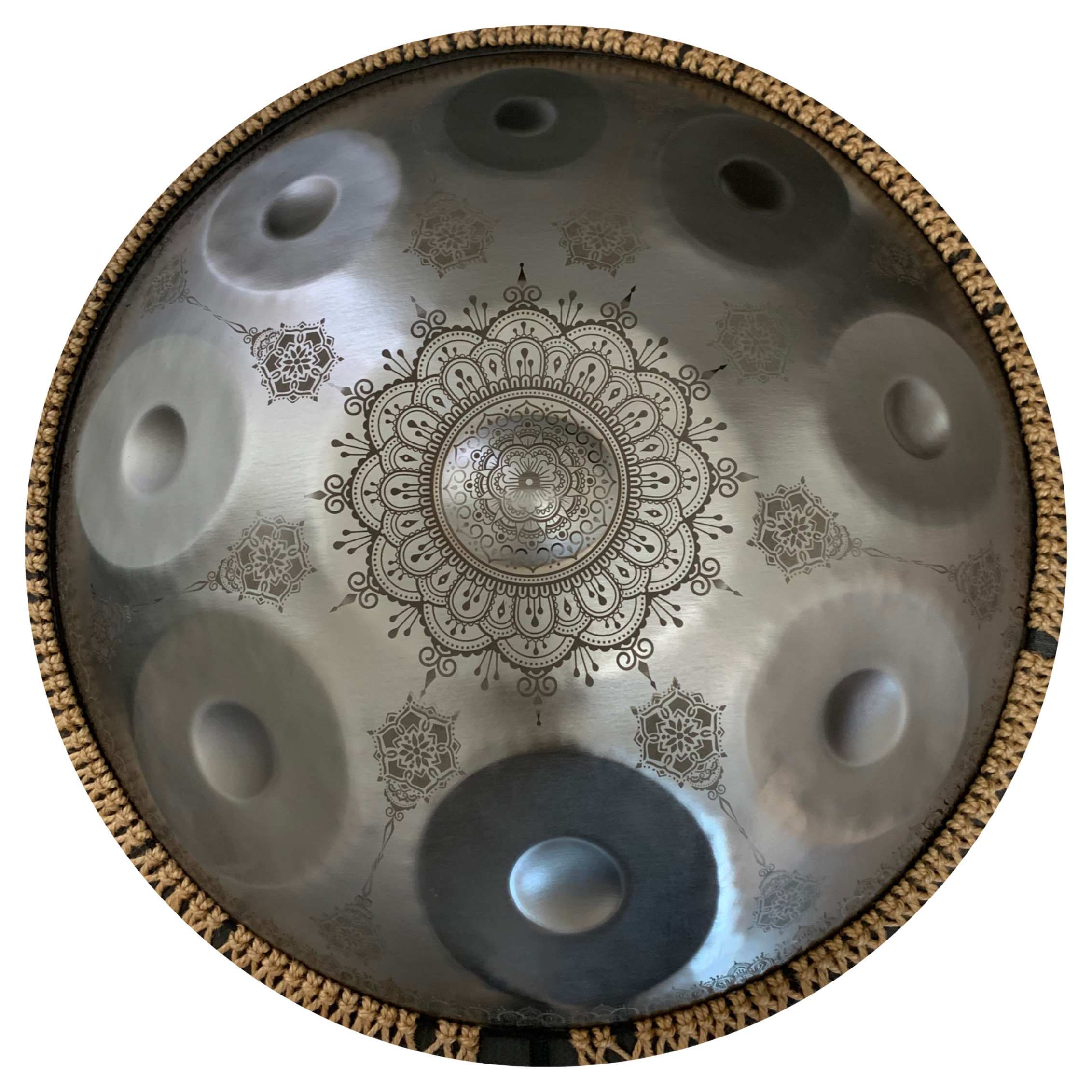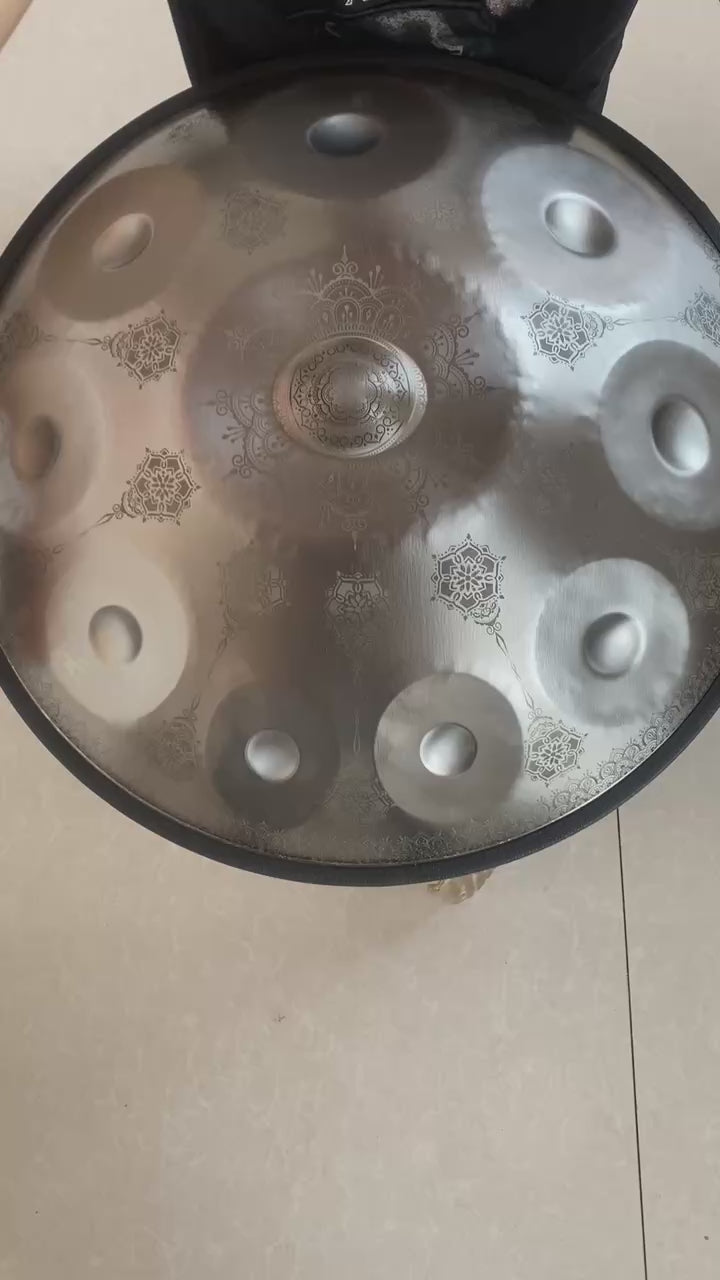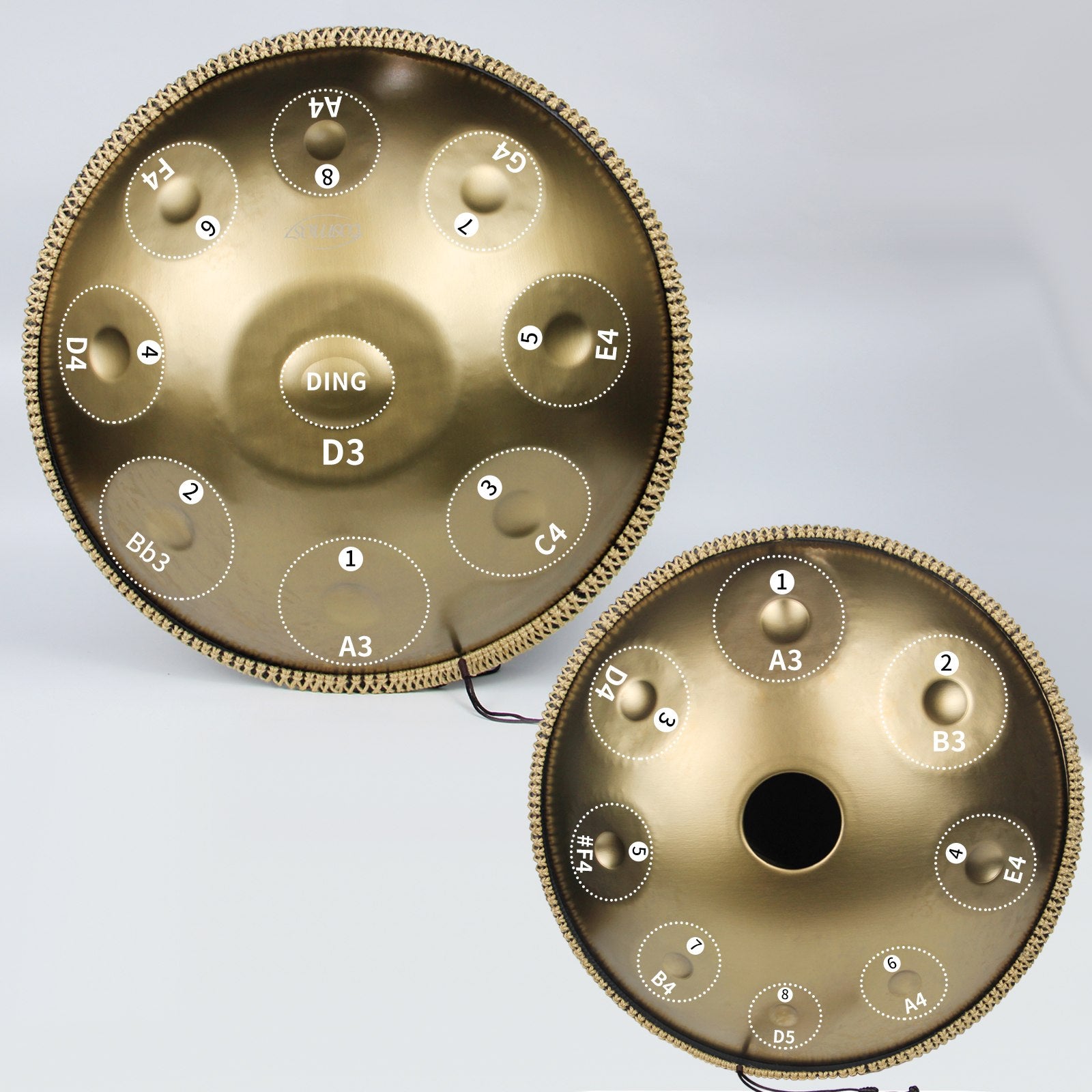Find your ideal Hang drum: explore materials, sizes, notes, and more to choose the perfect instrument for your musical journey.

Do you enjoy the sound of the handpan and are thinking of buying one but don’t know where to begin? It was much easier to purchase one in the early 2000s when the PANArt Hang was the only model available at the time.
Since then, the instrument’s popularity has increased rapidly, as has its demand. PANArt eventually halted operations in 2013, and other manufacturers took over to build new instruments. Despite this, demand continued to rise, and waiting lists grew to the point that you may sometimes wait between one and three years for a Handpan.
Fortunately, it is now easier and faster to obtain this instrument. Still, it is easy to become confused among the several handpans on the market. How do you choose the right handpan with so many variations available? What about the price? What should you know before taking the plunge?
In this article, we’ll address all of your questions. You must consider the following factors when selecting the ideal handpan. Take your time to ensure you make the right decision!
How To Choose a Hang Drum?
This is a massive question, and there is no simple or straightforward answer. But, with a few factors and some study, you can make the best selection for you.
Evaluate Handpan Quality Online
Search for handpan videos on YouTube and follow the links to listen to a variety of videos. Put on a headset to assist you in picking up on each instrument’s subtleties: tone, sustain, tuning, note balance, instrument dynamics, and so on. Take note of the distinctions between each instrument you hear.
This will allow you to sharpen your hearing. Once you’ve ‘tuned in’ to listening, you’ll know which one(s) sing to you.
The more videos you watch, the faster you’ll be able to distinguish between instruments that sound like saucepans and those of superior quality.
The number of views and likes on a video can serve as an indicator of an instrument's quality. However, exercise caution, as the video's popularity might be due to a trend rather than the instrument's actual merit.
Handpan Price
Handpans are not particularly expensive for a handmade instrument, but they are far from inexpensive. 90% of handpans cost between $1,500 and $3,000 USD. The problem, however, is that the instrument is in such high demand that some regard it as a business opportunity. That is why you will find manufacturers offering instruments at exorbitant prices in comparison to the quality they provide, as well as people reselling instruments for considerably more than they paid for them originally.
In other words, quality does not necessarily match the price. As a result, you will discover excellent instruments for $1,500, as well as others of inferior quality for $3,000 or more.
But don’t worry! With a bit of experience, your ear will guide you to the appropriate conclusion.
Handpan Materials
When selecting a handpan, it’s essential to consider the various materials available, each offering distinct advantages. Raw steel handpans, for instance, are untreated and, thus, generally the most cost-effective option. However, they are prone to rust, requiring significant care and maintenance. Therefore, they are not ideal for those living in humid environments or coastal areas. Additionally, they can experience stability and tuning issues over time.
On the other hand, steel-coated handpans are lighter and easier to handle and travel with, making them a convenient choice for many. Despite being cost-effective, they are susceptible to rust if the surface is damaged, and they typically offer less responsiveness and dynamic range.
For those seeking a balance between durability and playability, nitrided steel handpans might be the best option. Treated for rust resistance, they provide less sustain, which is beneficial for percussive players. However, they still require maintenance and rust prevention, and their shorter sustain may not be ideal for slow, melodic playing.
In contrast, stainless steel handpans are exceptionally rust-resistant, even if the surface is damaged, and require little to no maintenance. Their long sustain is perfect for melodic, slower playing. Nonetheless, they are harder to work with, which can lead to variations in quality and stability depending on the maker, and they are generally more expensive. The extended sustain also makes them less suitable for fast, percussive playing.
Finally, Ember Steel, a type of stainless steel, shares many of these characteristics. Ultimately, the best material for your handpan will depend on your playing style, environment, and how much time you invest in maintenance. This choice is often discussed in the handpan community, especially when it comes to the benefits of stainless steel versus nitrided steel. There are strong supporters for both materials.
Handpan Size
The size of a handpan plays a crucial role in terms of comfort, range, and ease of play. Before making a purchase, it is essential to consider several factors:
Firstly, the number of notes is a crucial consideration. While there is no difference in sound quality between larger and smaller instruments, those seeking more notes, including bottom notes and greater possibilities, will likely need a larger handpan.
Secondly, the scale of the handpan is influenced by its size. Larger handpans are capable of producing lower, more resonant scales, whereas smaller handpans typically produce higher scales.
Additionally, physicality is a vital aspect to consider. For individuals of a smaller build, children, or those with physical limitations, smaller handpans are more convenient to handle and carry. They are also easier to play for those with shorter arms and legs.
Furthermore, for those who travel frequently, the size of the handpan becomes a significant factor. Smaller handpans are lighter and more likely to fit into overhead storage compartments on planes, trains, and coaches. Although there are excellent hard cases available, such as the Evatek, it is generally safer to avoid checking in a handpan. Therefore, for frequent travellers or those carrying multiple handpans, opting for a smaller size may be advantageous.
Number of Notes of a Handpan
Handpans typically feature between 8 to 10 notes around the ding, but it is now possible to find handpans with over 20 notes on the top and bottom shells. An impressive feat indeed!
The maximum number of notes on a handpan depends on the preferences and technical skills of both the maker and the player. While some prefer a simpler design, others enjoy pushing the boundaries of what is possible. Makers face limitations due to the physics of the build, including factors like frequency and material diameter.
From a technical standpoint, increasing the number of notes on a handpan raises the likelihood of defects, cross-talk, and minor flaws. Nevertheless, some exceptional makers, such as Ayasa Instruments, Yishama, and Cosmoshandpan, have managed to craft remarkable instruments called “monsters.”
It is important to note that more notes also mean a higher cost, as the additional work in building and tuning requires more effort. Typically, each extra note can add between $50 to over $100 to the price.
On the positive side, having more notes expands the range of compositions and playing options. Extra bass notes can alter the mood, and additional bottom notes can facilitate switching between scales.
For beginners, the ideal number of notes depends on their musical knowledge and the time they can dedicate to learning and exploring the instrument. Generally, 8 to 9 notes on the top shell, along with 1 or 2 low notes on the bottom, provide a good range to start with. It’s best to keep it simple initially to get accustomed to the new instrument. Then, you can upgrade later if you want to.


